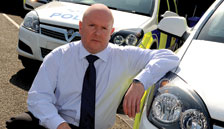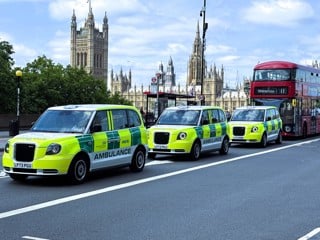Standardisation is rapidly becoming a buzzword in a public sector under intense pressure from the Government to cut costs. And nowhere can standardisation result in greater savings than in the fleet operation.
Central government is leading the way with its centralised procurement strategy, expected to save 15% on fleet spend over two years (Fleet News, May 12), while police fleets have been talking about working more closely together under the umbrella of the National Association of Police Fleet Managers (NAPFM) for the best part of a year.
But as the calls for police fleets to share resources grow ever louder, not least from its own Association of Chief Police Officers (ACPO), a template already exists which proves that standardisation and common fleet policies running across different organisations can work.
Chiltern Transport Consortium (CTC) was formed in 2003 initially to help solve the problems of a police force struggling with its fleet costs and management structure – Bedfordshire – by creating collaboration between its transport function and that of neighbouring Thames Valley Police.
Together, the two forces hoped to reduce costs on the procurement, maintenance and disposal of vehicles, rental and goods and services with a shared back office acting as a control and management function.
The common denominator was Ian Godolphin, formerly fleet manager at Bedfordshire Police, who moved across to Thames Valley in 1997. He saw the opportunity for the two forces to link up, with Thames Valley acting as the lead force.
It holds responsibility for the consortium which includes handling procurement, invoicing and finance.
Such was the immediate success of CTC in reducing costs and streamlining the fleet management operations that two more forces have signed up – Hertfordshire Constabulary in 2008 and Civil Nuclear Constabulary shortly afterwards. CTC now employs 71 staff.
The CTC strategy centres on vehicle standardisation as the biggest area of cost saving. However, each force is also linked to one server for fleet software (Tranman), has one point of contact for third party insurance claims and one rental desk for daily hires, which eliminates the costs associated with raising orders, checking invoice and pro-cessing payments.
Godolphin retired last year. His successor, Sam Sloan, who was fleet manager at Hertfordshire Constabulary, was appointed by Thames Valley Police as head of Chiltern Transport Consortium.
He has a fleet manager and fleet support managers to focus on the day-to-day operations based within the member force; his role now is purely strategic.
CTC handles an annual budget of £13.6 million across the four forces and provides a professional overview and guidance on the further £12.5 million spent on grey fleet, car hire and fuel.
The consortium was created with a number of objectives in mind – to reduce costs, provide resilience and depth of fleet management skills, share best practice across forces, share resources and vehicles (particularly relevant with specialist command vehicles which typically cost £150,000) and create a simple model for transportation by standardising model options for each vehicle type.
Sloan rings the successes.
“We have saved budget by 28% over the last six financial years, around £2.9 million. The main scope was with 2008/09, when Hertfordshire and Civil Nuclear joined.
“We have shared best practice in our back office collaboration which has reduced headcount in some cases.



















Login to comment
Comments
No comments have been made yet.